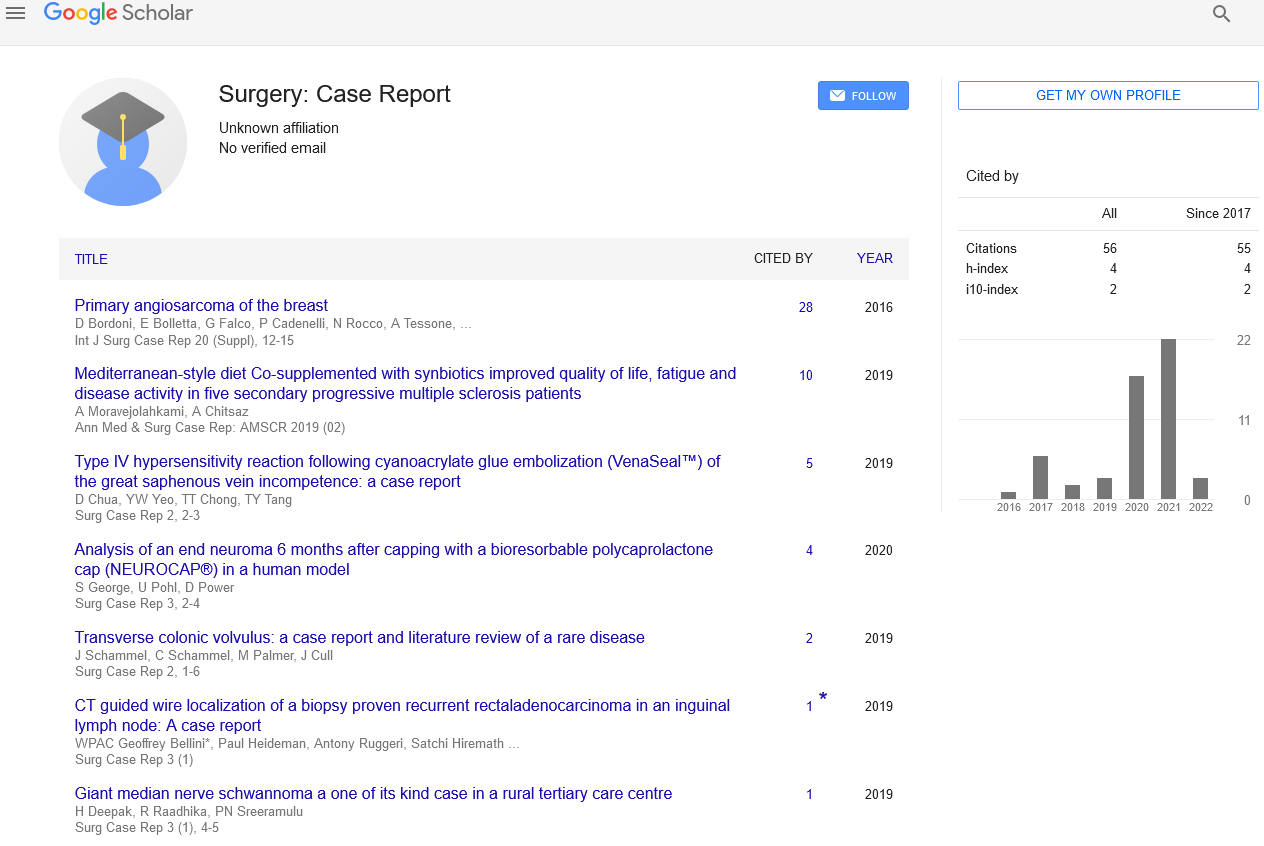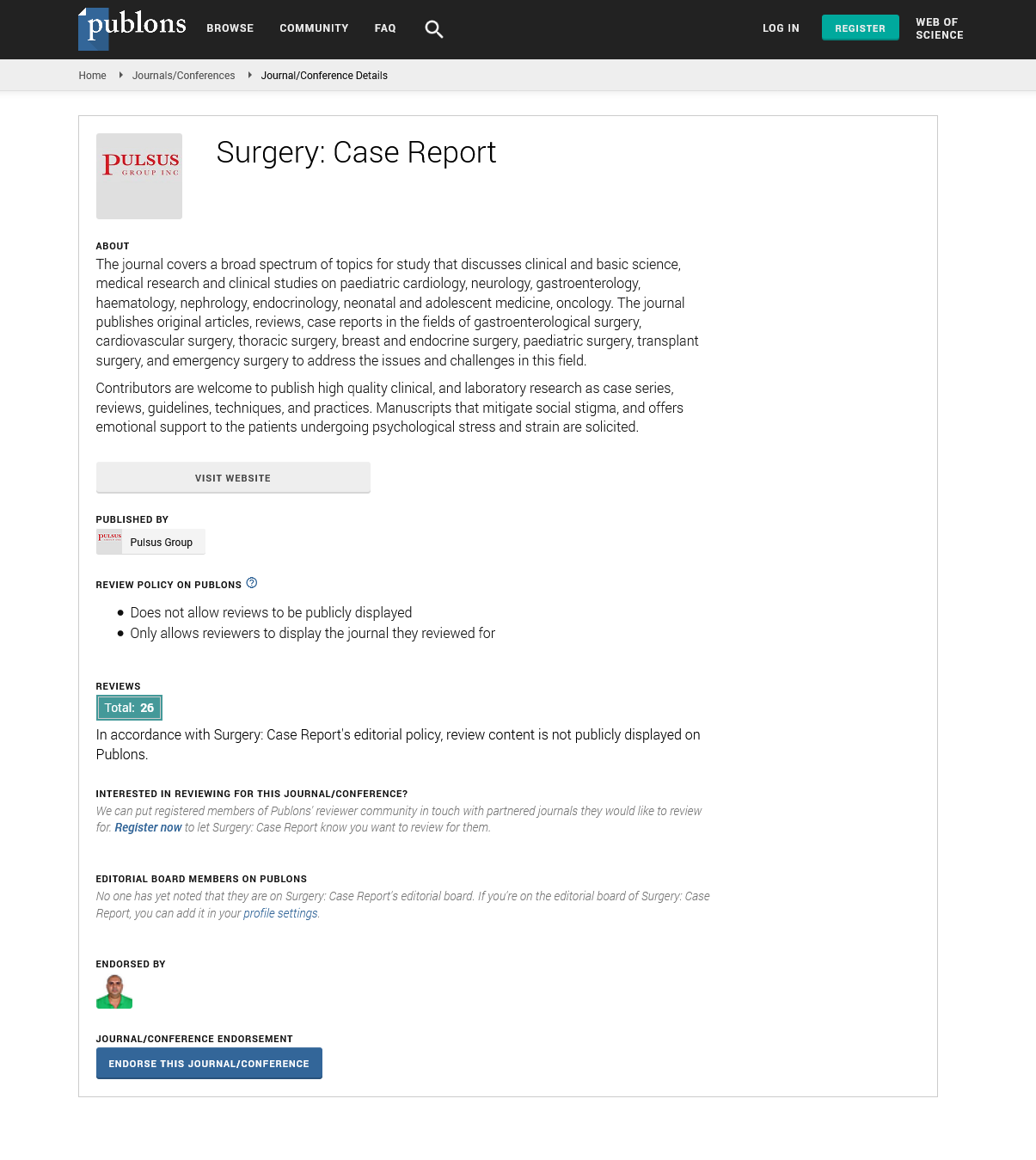Hysterectomy
Received: 02-Mar-2021 Accepted Date: Mar 19, 2021; Published: 22-Mar-2021
Citation: Spandana V. Editorial Note for Hysterectomy. Surg Case Rep 2021; 5:2.4
This open-access article is distributed under the terms of the Creative Commons Attribution Non-Commercial License (CC BY-NC) (http://creativecommons.org/licenses/by-nc/4.0/), which permits reuse, distribution and reproduction of the article, provided that the original work is properly cited and the reuse is restricted to noncommercial purposes. For commercial reuse, contact reprints@pulsus.com
Editorial
Ahysterectomy is an operation to remove the uterus. Depending on the reason for the hysterectomy, a surgeon may choose to remove all or only part of the uterus. Patients and health care providers sometimes use these terms in exactly, so it is important to clarify if the cervix and/or ovaries are removed:
• A supracervical or subtotal hysterectomy eliminates only the upper part of the uterus, keeping the cervix in position.
• A total hysterectomy eliminates the whole uterus and cervix.
• A radical hysterectomy eliminates the whole uterus, tissue on the sides of the uterus, the cervix, and the top part of the vagina. Radical hysterectomy is commonly done when cancer is present.
The specialist may eliminate the ovaries - a technique called oophorectomy - or may leave them in place. At the point when the tubes are eliminated that technique is called salpingectomy. At the point when the whole uterus, the two tubes, and the two ovaries are eliminated, the whole process is known as a hysterectomy and respective salpingectomy-oophorectomy.
Surgical techniques for hysterectomy
Surgeon utilizes various methodologies for hysterectomy, contingent upon the surgeon’s experience, the justification the hysterectomy, and the patient’s general wellbeing. The hysterectomy strategy will part of the way decide recuperating time and the sort of scar, assuming any, that stays after the activity.
There are two ways to deal with a medical procedure: a conventional or open a medical procedure and medical procedure utilizing a negligibly obtrusive method or MIP.
Open Surgery Hysterectomy
A stomach hysterectomy is an open a medical procedure. This is the most widely recognized way to deal with hysterectomy, representing about 54% for all amiable illness. To play out a stomach hysterectomy, a surgeon makes a 5-to 7-inch entry point, either here and there or side-to-side, across the midsection. The specialist at that point eliminates the uterus through this cut. Following a stomach hysterectomy, an individual will as a rule go through 2-3 days in the medical clinic. There is additionally, subsequent to recuperating, a noticeable scar at the area of the cut.
MIP Hysterectomy- There is a few methodologies that can be utilized for a MIP hysterectomy:
• Vaginal hysterectomy: Surgeon makes a cut in the vagina and eliminates the uterus through this entry point. The cut is closed, leaving no noticeable scar.
• Laparoscopic hysterectomy: This medical procedure is finished utilizing a laparoscope, which is a cylinder with a lit camera, and careful devices embedded through a few little cuts made in the midsection or, on account of a solitary site laparoscopic method, one little cut made in the paunch button. The surgeon plays out the hysterectomy from outside the body, seeing the procedure on a video screen.
• Laparoscopic-helped vaginal hysterectomy: The surgeon utilizes laparoscopic devices in the midsection to aid the evacuation of the uterus through a cut in the vagina.
• Robot-helped laparoscopic hysterectomy: This technique is like a laparoscopic hysterectomy, yet the surgeon controls a refined automated arrangement of careful apparatuses from outside the body. Trend setting innovation permits the surgeon to utilize common wrist developments and view the hysterectomy on a threedimensional screen.






